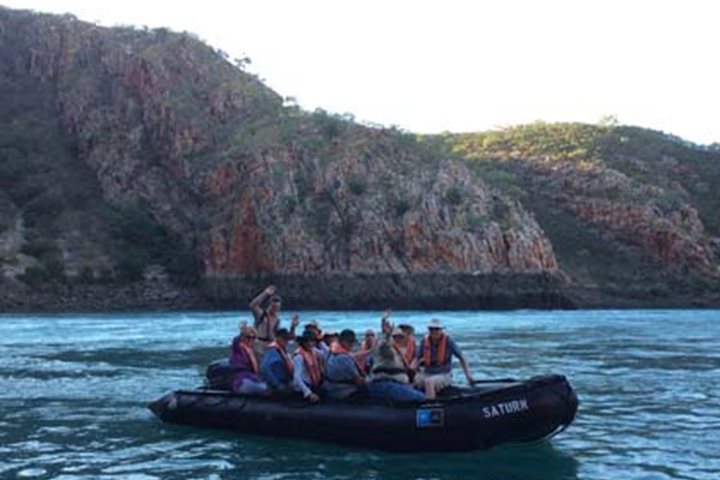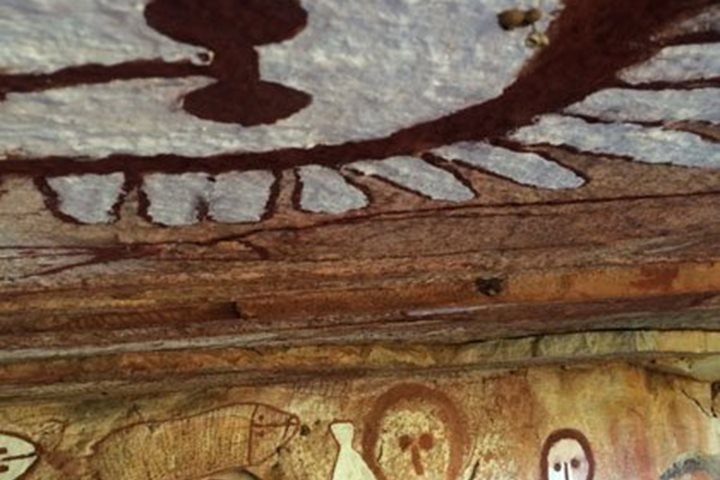It was a warm but windy start at the remarkable Vansittart Bay. Cameras and spray jackets in hand, we braved the balmy winds and headed to Jar Island. Even guided by our experienced Zodiac drivers, some of us got a bit wet, but the water was warm! This is the beauty of The Kimberley: nice temperatures in the middle of the winter season! After disembarking at a little picturesque beach, we set out to explore the rugged and intriguing Jar Island. This is where we had the exceptional opportunity to sight the mysterious and ancient Bradshaw or Gwion Gwion rock art. After a short and accessible walk through a sandstone pathway, we visited three main galleries, where different styles of rock art can be found. Bradshaw figures are the most extensive primitive rock drawings in the world. Depicting elongated human figures dissimilar from Aboriginal art found throughout the Kimberley, the Bradshaw figures were named after the English pastoralist and explorer, Joseph Bradshaw.
He made the discovery in 1891 whilst traversing the Prince Regent River area, searching for suitable pastures. In 1994, a technique using optically stimulated luminescence to date fossilized mud wasp nests that were built over Bradshaw figures showed the nests to be 17,000 to 22,000 years old. This finding provides a minimum age dating back to the last ice age. The Bradshaw figures are usually mulberry in colour and appear to be impregnated into the rock rather than painted on. They are very detailed depicting males in ceremonial dress. On occasion, pronounced breasts on either side of the figure identify rarely sighted female figures. Numerous tassel-shaped ornaments are evident depicting hair. In many cases Wandjina art has been painted over Bradshaw art and have only been revealed when the ochre peels off the rock surface. Explorer and art researcher Grahame Walsh systematically documented the paintings and recorded the legends and historic incidents, relevant to significant rock art regions of Australia.
After this unique art sighting opportunity, a delicious lunch was savored on deck. Following a deserved rest, we headed to our second adventure. It was time to visit the C-53 plane wreckage, a representative of World War II history. The plane is located at Anjo Peninsula. On February 1942, during a return flight from Perth to Broome, the pilot made a navigational error and crashed landed on a salt pan. No lives were lost and the crew members were rescued after almost a week in the bush and hot and humid weather.
The day ended with delighted and elated guests after another amazing unique experience in The Kimberley.









